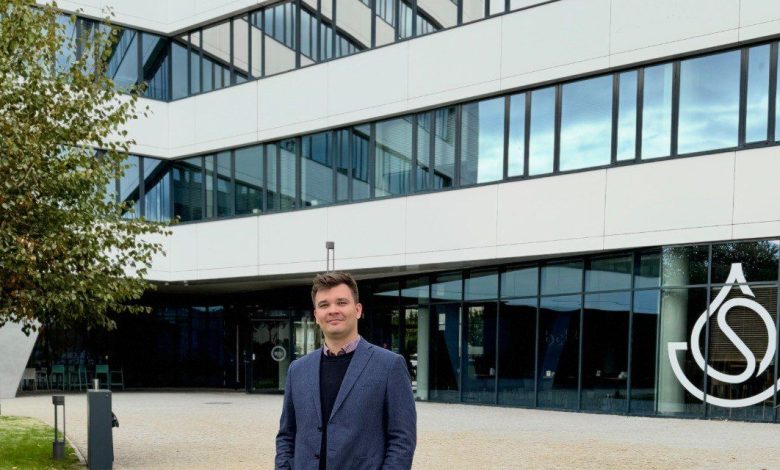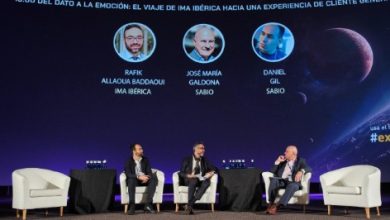
Published on 03.11.2025
When Microsoft signed a long-term agreement with Nebius for advanced GPUs, it exposed an uncomfortable truth: even tech giants struggle with the infrastructure that AI demands. Behind every ChatGPT query and every AI-generated image lies a fragile ecosystem where a single misconfiguration can cascade into millions in losses. ATMs stop dispensing cash. Payment systems freeze. Medical diagnostics fail. The rush to AI has revealed that most companies’ cloud systems weren’t built for this moment.
Jakub Dunak saw this crisis coming years ago. Starting as a database administrator who watched financial systems crash and leave people stranded without access to their money, he understood that technology failures aren’t just technical problems; they’re trust disasters. Now, as Principal Architect at Ness Digital Engineering, holding certifications from AWS Solutions Architect Professional to Microsoft Cybersecurity Architect Expert, he’s tackling the three challenges that determine whether AI succeeds or destroys value: reliability, complexity, and compliance.
His journey, from stabilizing major financial transaction systems to orchestrating multi-cloud architectures across Europe, reveals truths about modern infrastructure. Over the course of his career, he has discovered why multi-cloud environments — sold as the ultimate flexibility solution — actually create chaos when AWS, Azure, and Google Cloud refuse to speak the same language.
The stakes keep rising. As AI moves into self-driving cars and digital health systems, Jakub’s work poses critical questions: Why do companies spend millions on GPUs but pennies on the infrastructure to run them? How did he cut system recovery time from hours to minutes when others can’t even guarantee uptime? What makes compliance an accelerator rather than a brake on innovation? The answers reveal why the future of AI depends less on algorithms and more on the unglamorous work of making sure systems don’t fail when people need them most.
The first problem many companies often face is how to make systems reliable. Finance and retail always relied on old, weak systems that often break down, costing not just hours of downtime but millions of dollars. At Diebold Nixdorf, Jakub focused on making databases run smoothly for financial transactions. “When a system crashes, it’s not just some technical glitch,” he says. “People at ATMs can’t get their cash, stores stop taking payments, and trust starts to fall apart.” To fix this, he put in disaster recovery plans that cut recovery times from hours to just minutes. He set up automatic backups to avoid relying on manual fixes and fine-tuned performance to handle heavy workloads better. These changes didn’t just keep systems running. They reassured users that the services they counted on would always be there.
Then, as these businesses update their systems and embrace the cloud, reliability stops being the main issue. Instead, they start facing a new problem, which is complexity. Multi-cloud sounded like the perfect solution to offer flexibility by combining AWS, Azure, and Google Cloud. But in reality, it often made managing systems even more difficult. Each platform now has different security rules, compliance policies, and billing processes, making them work independently rather than as a team. This confusion became a bigger issue for AI workloads, which require smooth data flow and powerful computing resources. A small mistake in one system could spread issues throughout, putting performance and safety at risk. Jakub noticed this while working at CANCOM Slovakia, where global clients had trouble matching rules across different regions. He tackled this problem by creating designs that combined centralized controls with smarter workload distribution between platforms. This streamlined operations to a great extent and significantly lowered the risk of mistakes that might reveal sensitive information. He turned multi-cloud from a drawback into an advantage, allowing businesses to gain the flexibility they wanted while maintaining coherence and control.
Now, the growth of AI has added a layer of compliance to these problems. For example, old-school file transfer systems are now seen as being very weak and inefficient. However, any breaches resulting from insecure or poorly configured setup could be very disastrous. In highly regulated fields like banking and insurance, even small mistakes can lead to millions of dollars in fines, and damage a company’s hard-earned reputation for years to come. At Ness Digital Engineering, Jakub came up with an original solution: the AI-driven Managed File Transfer (MFT) system, a cloud-based platform that changed how sensitive data moves within and between companies. Unlike traditional MFT tools, which require teams of experts to manually script and monitor every process, this system incorporates Agentic AI as a bridge between humans and infrastructure. Users can explain tasks using everyday language, such as bringing on a new data partner, addressing SLA breaches, or adjusting routing rules, and the AI builds, checks, and carries out these processes on its own. It doesn’t just apply encryption, compliance, and access rules in real-time but also expands as needed to handle massive amounts of data per hour using cloud resources, ensuring that customers pay for their actual usage. For customers, this led to clear benefits: it cut down onboarding times from days to less than an hour, halved running costs, and reduced compliance issues significantly. The MFT platform didn’t just modernize file sharing; it showed that automation, security, and compliance could finally work together without any downsides. “If compliance seems to slow innovation, then the architecture has flaws,” he explains. “When done right, compliance drives progress forward.”
For businesses, the effects extend well beyond just technical efficiency. System failures can lock people out of their bank accounts. Configuration mistakes can expose sensitive information. Falling short on compliance could harm trust across whole sectors. To users, this can mean having a seamless app experience or facing financial chaos. It could mean trusting healthcare systems with privacy or losing faith. As AI moves into areas like self-driving cars and digital health systems, the risks will increase. Yet, Jakub Dunak’s work stands out not just because of his technical skills but also because he has tackled the industry’s toughest challenges today. He has worked on cutting recovery time in unreliable legacy systems. He has organized messy multi-cloud setups. He has also made compliance part of AI systems at scale. His career shows how companies can go from being seen as unreliable to earning trust in the AI age. “Technology works if people trust it. That’s the big test for architects,” he concludes.




